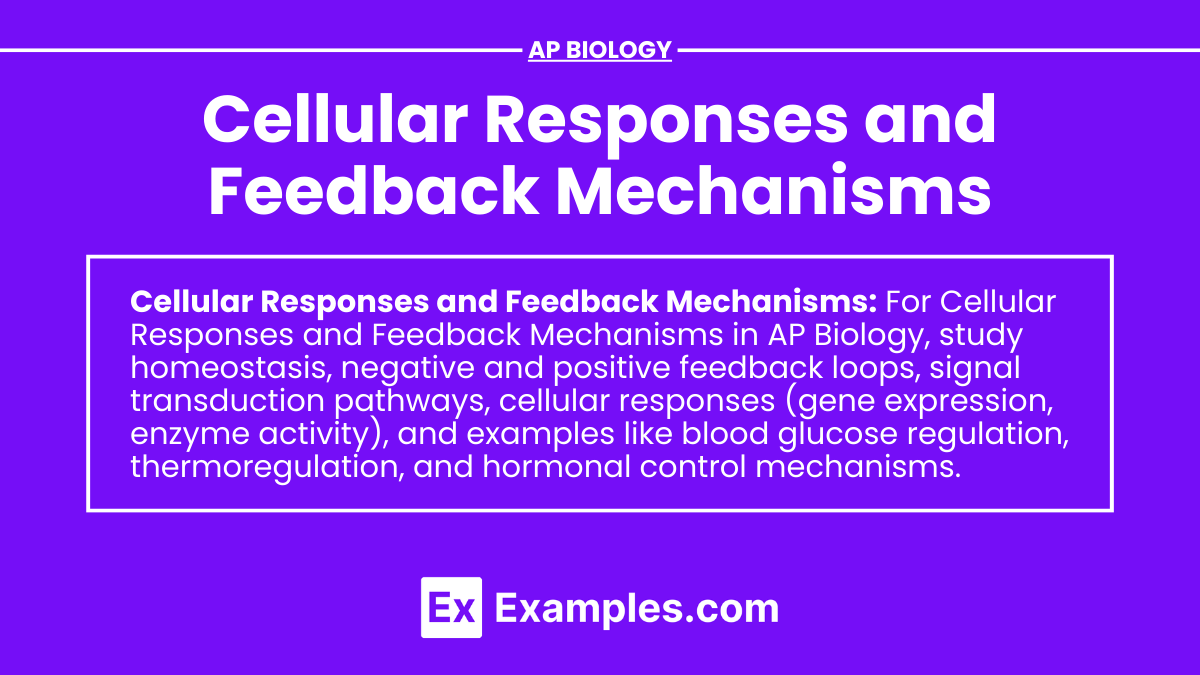In AP Biology, understanding cellular responses and feedback mechanisms is crucial. Cells communicate and adapt through various processes involving the nucleus, cell wall, and cell membrane. According to cell theory, cells are the basic units of life, and their activities, including the cell cycle and cell division, are tightly regulated. These mechanisms ensure that cells respond appropriately to stimuli, maintaining homeostasis and proper function.
Learning Objectives
In studying Cellular Responses and Feedback Mechanisms for AP Biology, students should achieve the following learning objectives: Understand how cell theory relates to cellular responses, explore regulation of the cell cycle, and the roles of the cell wall, cell membrane, and cytosol in these processes. Additionally, students should recognize the importance of the nucleus in gene regulation, understand how cells respond to antigens in humoral immunity, and how feedback mechanisms maintain homeostasis and coordinate cellular functions.
Cellular Responses
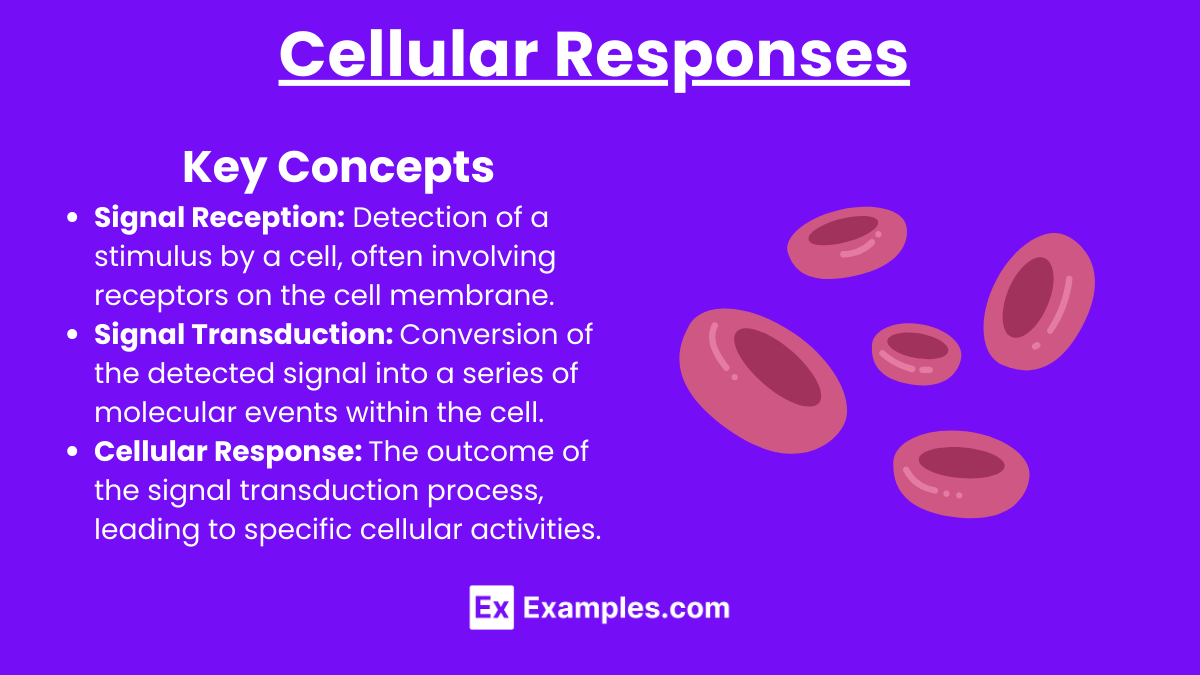
Overview
Cellular responses are the reactions of cells to external or internal stimuli. These responses can involve changes in gene expression, protein activity, cell behavior, or metabolism. Cellular responses are vital for processes like growth, differentiation, adaptation to environmental changes, and maintaining homeostasis.
Key Concepts
Signal Reception: Detection of a stimulus by a cell, often involving receptors on the cell membrane.
Signal Transduction: Conversion of the detected signal into a series of molecular events within the cell.
Cellular Response: The outcome of the signal transduction process, leading to specific cellular activities.
Types of Cellular Responses

Changes in Gene Expression:
Transcription Factors: Proteins that regulate the transcription of specific genes in response to signals.
Epigenetic Modifications: Changes in DNA or histone modifications that affect gene expression without altering the DNA sequence.
Protein Activation/Inactivation:
Phosphorylation: Addition of phosphate groups to proteins by kinases, altering their activity.
Dephosphorylation: Removal of phosphate groups by phosphatases.
Metabolic Pathway Regulation:
Allosteric Regulation: Binding of molecules to enzymes at sites other than the active site, influencing enzyme activity.
Feedback Inhibition: End products of metabolic pathways inhibit the activity of enzymes involved in their synthesis.
Cell Behavior Changes:
Cytoskeleton Reorganization: Changes in the structure and dynamics of the cytoskeleton, affecting cell shape, motility, and division.
Cell Cycle Regulation: Control of cell division and growth in response to internal and external signals.
Apoptosis:
Programmed Cell Death: Controlled process of cellular self-destruction, crucial for development and maintaining tissue homeostasis.
Feedback Mechanisms
Overview
Feedback mechanisms are processes that regulate biological systems to maintain stability and homeostasis. They involve monitoring changes and making adjustments to keep physiological parameters within optimal ranges. Feedback mechanisms can be either negative or positive.
Negative Feedback Mechanisms
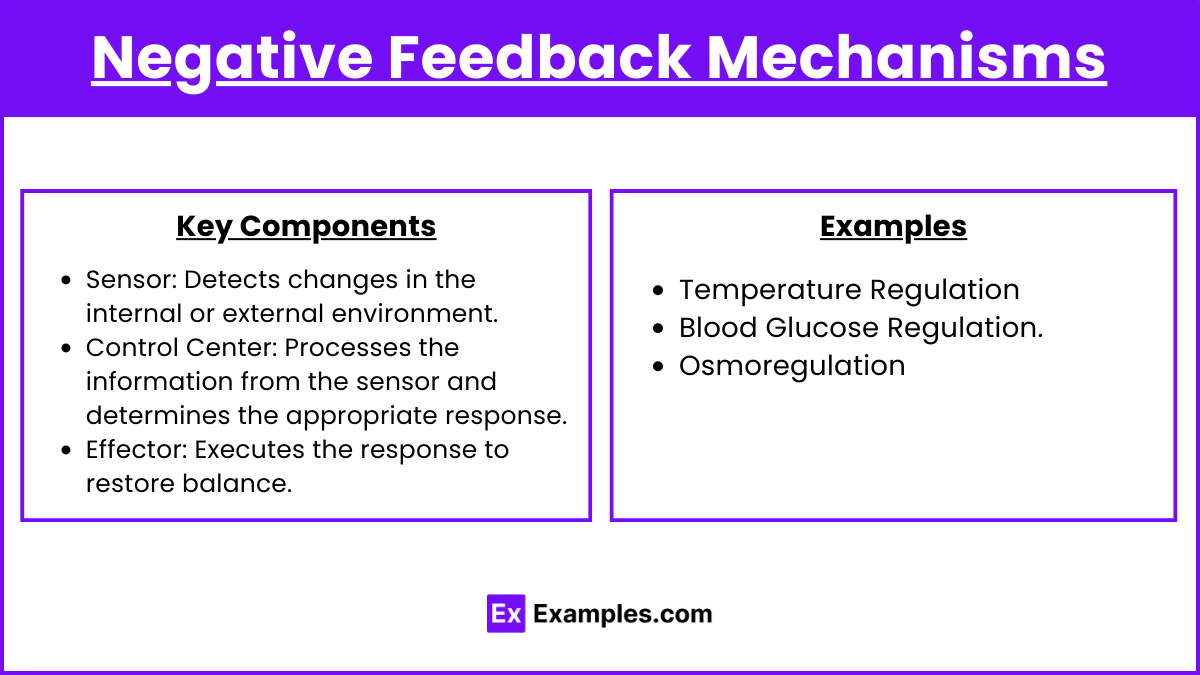
Negative feedback mechanisms counteract deviations from a set point, promoting stability.
Key Components
Sensor: Detects changes in the internal or external environment.
Control Center: Processes the information from the sensor and determines the appropriate response.
Effector: Executes the response to restore balance.
Examples
Temperature Regulation:
Sensor: Thermoreceptors detect changes in body temperature.
Control Center: Hypothalamus processes the information.
Effector: Sweat glands and blood vessels adjust heat loss or retention.
Blood Glucose Regulation:
Sensor: Pancreatic cells detect changes in blood glucose levels.
Control Center: Pancreas releases insulin or glucagon.
Effector: Liver and muscle cells adjust glucose uptake and storage.
Osmoregulation:
Sensor: Osmoreceptors in the hypothalamus detect changes in blood osmolarity.
Control Center: Hypothalamus regulates ADH secretion.
Effector: Kidneys adjust water reabsorption.
Positive Feedback Mechanisms
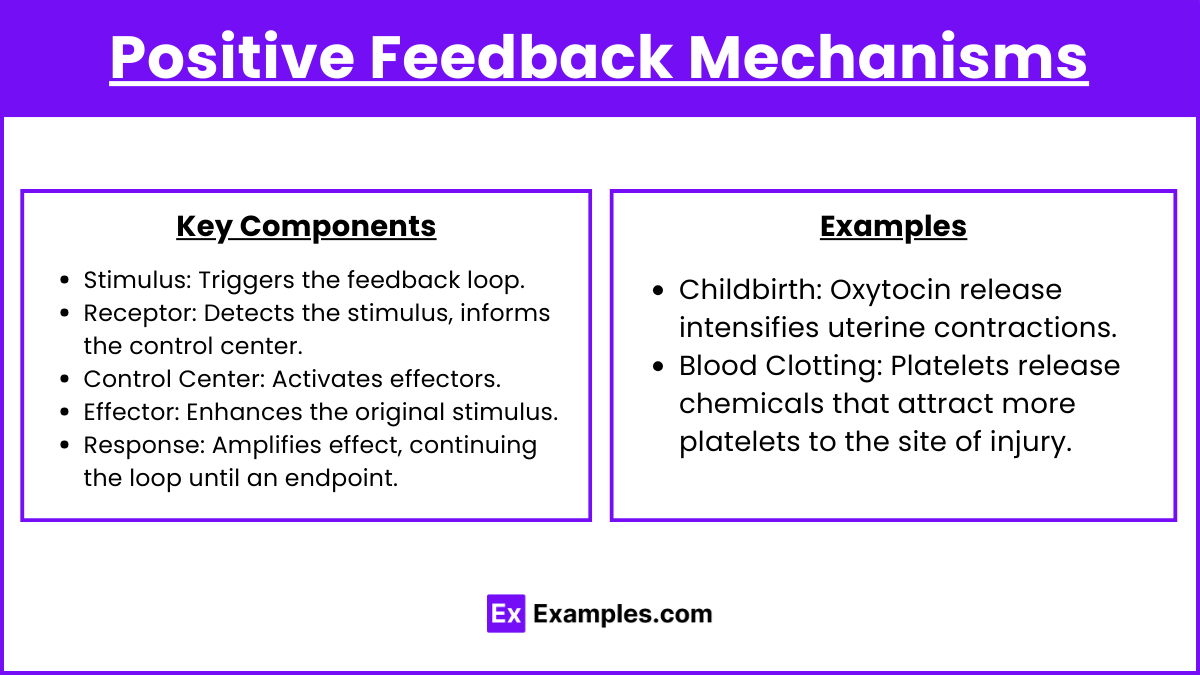
Positive feedback mechanisms amplify changes, driving processes to completion.
Examples
Childbirth:
Sensor: Stretch receptors in the uterus detect contractions.
Control Center: Hypothalamus releases oxytocin.
Effector: Uterine muscles contract more intensely.
Blood Clotting:
Sensor: Injury to a blood vessel triggers platelet activation.
Control Center: Activated platelets release signaling molecules.
Effector: More platelets are recruited to form a clot.
Cellular Communication and Feedback
Integration of Cellular Responses and Feedback Mechanisms
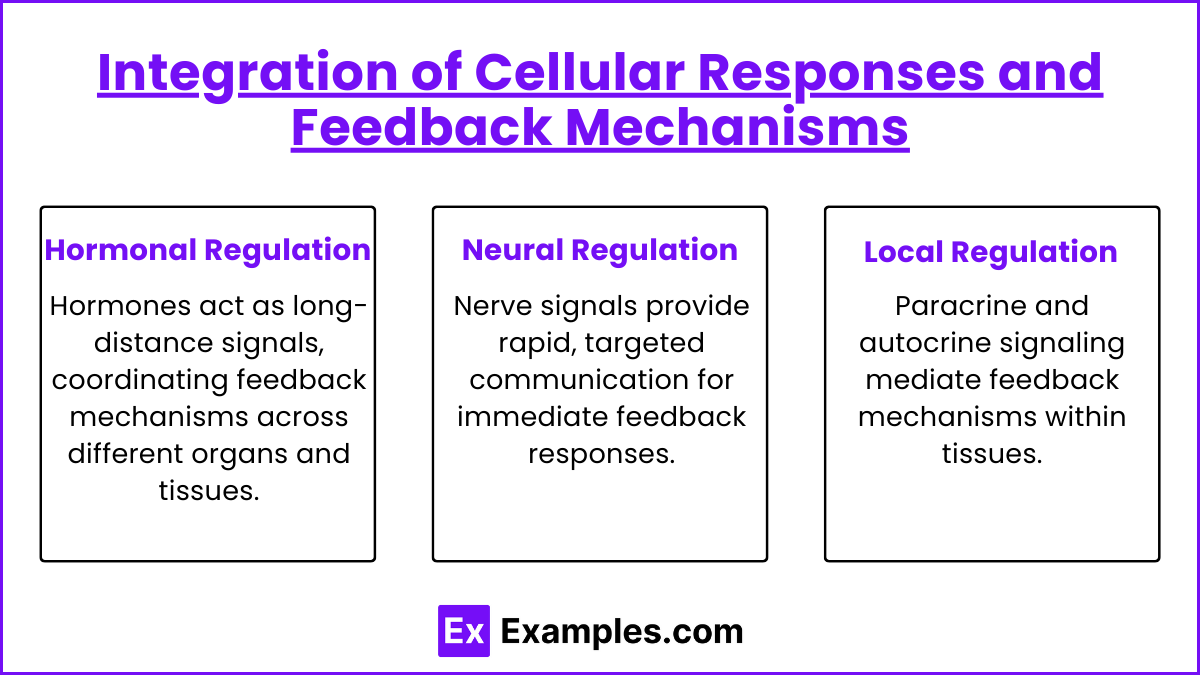
Hormonal Regulation:
Hormones act as long-distance signals, coordinating feedback mechanisms across different organs and tissues.
Example: Regulation of blood calcium levels by parathyroid hormone (PTH) and calcitonin.
Neural Regulation:
Nerve signals provide rapid, targeted communication for immediate feedback responses.
Example: Reflex arcs in response to painful stimuli.
Local Regulation:
Paracrine and autocrine signaling mediate feedback mechanisms within tissues.
Example: Local inflammatory response to injury.

